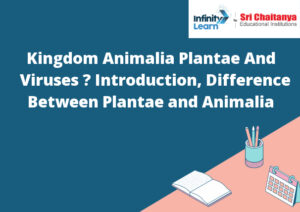Table of Contents
Difference Between Plantae And Animalia
The main difference between Plantae and Animalia is that Plantae are autotrophic and Animalia are heterotrophic. Plantae are able to create their own food through photosynthesis, while Animalia must consume other organisms in order to get their nutrition. Additionally, Plantae typically have cell walls made of cellulose, while Animalia do not.
Plantae and Animalia are two kingdoms of living organisms. The major difference between these two kingdoms is that plants are autotrophs while animals are heterotrophs. Plants are able to produce their own food through photosynthesis while animals must consume other organisms to obtain their nutrients. This is the primary reason why plants are able to grow and thrive in a much broader range of habitats than animals.

The Virus Comes Under Which Kingdom?
The virus falls under the domain of life and is classified as a living organism. It is a small, infectious agent that can only replicate inside the cells of a host organism. Viruses are not considered to be alive on their own and must invade and take over the cells of another living creature to survive.
There are six kingdoms of living organisms: Monera, Protista, Fungi, Plantae, Animalia, and Archaea. The virus falls under the kingdom of Monera. Monera is a kingdom of single-celled organisms that lack a nucleus. The virus is a very small, simple organism that lacks many of the features of cells, such as a plasma membrane, cytoplasm, and organelles. The virus relies on the cells of its host to replicate and does not have the ability to synthesize its own proteins or nucleic acids.
Kingdom Animalia
The Kingdom Animalia is a group of creatures that are all multicellular, heterotrophic, and eukaryotic. They are all able to move around on their own and most of them are able to eat other things to survive. Animals are divided into different phyla based on their body type and general characteristics.
Kingdom Animalia is a large and diverse group of creatures that are all related because they share a common ancestor. This kingdom is made up of multicellular organisms that are eukaryotic, which means that their cells have a nucleus. Animalia is divided into two groups: invertebrates and vertebrates. Invertebrates are animals without a backbone, while vertebrates are animals with a backbone.
The most common animals in the world are invertebrates. They include things like insects, spiders, and worms. Invertebrates are important because they play a vital role in the environment. For example, insects are important pollinators, and spiders help to control the population of pests.
Vertebrates are a smaller group of animals, but they are very important. Vertebrates include fish, amphibians, reptiles, birds, and mammals. Mammals are the most important group of vertebrates, and they include things like lions, tigers, and bears. Mammals are important because they are the only animals that can produce milk, which is important for newborn babies.
All animals in the kingdom Animalia are important in their own way, and they all play a role in the environment.
Kingdom Plantae
Kingdom Plantae is a kingdom in the Domain Eukarya. This kingdom contains all plants, both vascular and nonvascular. Vascular plants have tissue that transports water and other nutrients throughout the plant, while nonvascular plants do not.
The Kingdom Plantae is a large and diverse group of organisms that includes all plants. Plants are a vital part of the environment, and they play a critical role in the Earth’s food web.
Plants have adapted to a wide variety of habitats, and they can be found in every corner of the globe. They vary in size and shape, and they come in a variety of colors. Plants can be simple or complex, and they range from the smallest mosses to the tallest trees.
Plants are able to photosynthesize, and they use this process to convert sunlight into energy. This energy is used to produce food, and plants use it to grow and reproduce. Plants also produce oxygen, and they play a vital role in the Earth’s atmosphere.
Plants are an important part of the food chain, and they provide food for a variety of animals. Humans rely on plants for food, and they also use plants for medicine and other purposes. Plants are a vital part of the ecosystem, and they play a key role in maintaining the balance of the environment.







